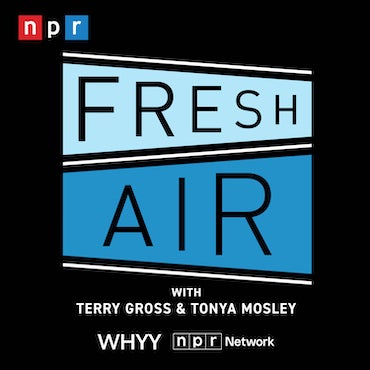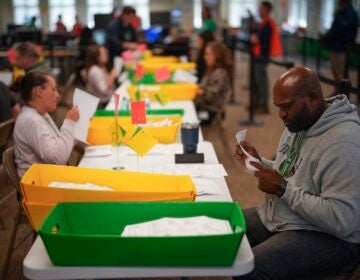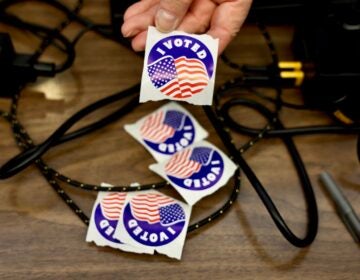President Trump became Jack Ciattarelli’s ultimate liability in the New Jersey gubernatorial race, political experts say
Polling suggested a tight election but did not consider how President Donald Trump would galvanize voters to the polls.

New Jersey Republican gubernatorial candidate Jack Ciattarelli speaks during an election night gathering, Tuesday, Nov. 4, 2025, in Bridgewater, N.J. (AP Photo/Matt Slocum)
Election 2025: Here’s what to know
- Race results: Here’s who won and who lost in Pennsylvania and New Jersey
- Prelude to 2026?: Democrats dominated as economic woes took a toll on Trump’s GOP. Here are some key takeaways
- Ballot questions: Here’s how Philly’s suburbs voted on open space and policing ballot measures
- Voter turnout: Philly voter turnout rose to 34% this election — the highest in at least a decade. Here’s why
New Jersey’s gubernatorial election took a national significance Tuesday night as Gov.-elect Mikie Sherrill soundly defeated Republican former Assemblyman Jack Ciattarelli.
Discontent with President Donald Trump, the Republican Party and the ongoing federal government shutdown, as well as cuts to the Supplemental Nutrition Assistance Program, or SNAP, influenced voter turnout and Sherrill’s victory, experts said. Although official numbers have not been released by the state Division of Elections, New Jersey voters reportedly turned out in high numbers.
“At least our polling showed that Trump was a large factor for the majority of voters, including for independent voters,” said Ashley Koning, director of the Eagleton Center for Public Interest Polling at Rutgers University. “These factors galvanized voters even more than anyone could have predicted given the turnout.”
Micah Rasmussen, director of the Rebovich Institute for New Jersey Politics at Rider University, agreed that Trump turned out to be a huge factor in New Jersey.
“Trump giveth and Trump taketh away,” he said. “When he is on the ballot and he’s bringing out those Trump-only voters, about a half a million of them in New Jersey, Republicans do much better.”
Rasmussen pointed to Trump losing New Jersey in 2024 by 6%, a 10-percentage-point improvement compared to four years earlier. With Trump not on the ticket, he said, it is a “different story entirely.”
“All the demographic gains that the Republicans made under Trump, whether it was Latinos or Passaic County, or even the suburbs of Morris County, that all evaporated … in the space of a year,” he said.
Ciattarelli, unlike four years ago, was more embracing of the president in his campaign. He gave Trump an “A” during the second gubernatorial debate, praising the president’s actions on border security and the One Big Beautiful Bill Act.
The result? The Garden State became part of a blue wave of Democratic victories in Virginia, New York City and California, where voters approved a new congressional map designed to boost the chances of the party gaining five more seats in the U.S. House of Representatives.
“People want a different type of politics right now, one that’s going to prioritize their well-being and prioritize affordability as a message,” said Antoinette Miles, state director of the New Jersey Working Families Party, a progressive political organization.
Miles said voters wanted someone who is willing to fight for issues they care about, which they did not see in Ciattarelli.
“Voters did not like what he was going to do,” she said, referring to Ciattarelli’s promises to change the state’s affordable housing law, known as the Mt. Laurel Doctrine, and criminal justice reforms. “I think it became very clear going into the final weeks of this election that Jack Ciattarelli was going to fold over for Donald Trump no matter what.”
In the end, the Ciattarelli-Sherrill race wasn’t close despite opinion polls suggesting otherwise.
Koning said polls are not often accurate because pollsters are not talking to the entire population.
“You apply that margin of error to any of those mid-single-digit leads and you get pretty darn close to what we actually saw happen last night,” she said.
Using the Eagleton poll before Tuesday’s election, which had a 5% margin of error, as an example, Koning said Sherrill could have polled “anywhere up to 55%,” while Ciattarelli “could have been anywhere down to 40%.”
“Understanding the range of possibilities and that uncertainty, I think is first and foremost what we need to realize going forward in elections,” Koning added.

Get daily updates from WHYY News!
WHYY is your source for fact-based, in-depth journalism and information. As a nonprofit organization, we rely on financial support from readers like you. Please give today.







